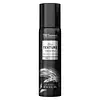What's inside
What's inside
 Key Ingredients
Key Ingredients

No key ingredients
 Benefits
Benefits

 Concerns
Concerns

 Ingredients Side-by-side
Ingredients Side-by-side

Hydrofluorocarbon 152a
Dimethyl Ether
SolventAlcohol Denat.
AntimicrobialVp/Va Copolymer
Zeolite
AbsorbentSilica Silylate
EmollientGlycerin
HumectantTriethyl Citrate
MaskingParfum
MaskingPEG/PPG-17/18 Dimethicone
EmulsifyingColloidal Gold
AntimicrobialWater
Skin ConditioningHydrolyzed Silk
HumectantAmp-Isostearoyl Hydrolyzed Wheat Protein
CleansingBenzyl Salicylate
PerfumingHydroxycitronellal
PerfumingLimonene
PerfumingHexyl Cinnamal
PerfumingCoumarin
PerfumingPolysilicone-15
UV FilterGossypium Herbaceum Seed Oil
Skin ConditioningPhospholipids
Skin ConditioningHelianthus Annuus Seed Oil
EmollientPentylene Glycol
Skin ConditioningHydrofluorocarbon 152a, Dimethyl Ether, Alcohol Denat., Vp/Va Copolymer, Zeolite, Silica Silylate, Glycerin, Triethyl Citrate, Parfum, PEG/PPG-17/18 Dimethicone, Colloidal Gold, Water, Hydrolyzed Silk, Amp-Isostearoyl Hydrolyzed Wheat Protein, Benzyl Salicylate, Hydroxycitronellal, Limonene, Hexyl Cinnamal, Coumarin, Polysilicone-15, Gossypium Herbaceum Seed Oil, Phospholipids, Helianthus Annuus Seed Oil, Pentylene Glycol
Ingredients Explained
These ingredients are found in both products.
Ingredients higher up in an ingredient list are typically present in a larger amount.
Hexyl Cinnamal is a fragrance ingredient with a similar scent to jasmine. It can be naturally found in chamomile essential oil.
This ingredient is a known EU allergen and may sensitize the skin. The EU requires this ingredient to be listed separately on an ingredients list.
Hexyl Cinnamal is not water soluble but is soluble in oils.
Learn more about Hexyl CinnamalWe don't have a description for Hydrofluorocarbon 152a yet.
Hydroxycitronellal is a fragrance created from citronellal. The smell of hydroxycitronellal is often described as "citrus-like" or "melon-like".
Hydroxycitronellal is a known EU allergen and may cause irritation when applied to the skin.
Parfum is a catch-all term for an ingredient or more that is used to give a scent to products.
Also called "fragrance", this ingredient can be a blend of hundreds of chemicals or plant oils. This means every product with "fragrance" or "parfum" in the ingredients list is a different mixture.
For instance, Habanolide is a proprietary trade name for a specific aroma chemical. When used as a fragrance ingredient in cosmetics, most aroma chemicals fall under the broad labeling category of “FRAGRANCE” or “PARFUM” according to EU and US regulations.
The term 'parfum' or 'fragrance' is not regulated in many countries. In many cases, it is up to the brand to define this term.
For instance, many brands choose to label themselves as "fragrance-free" because they are not using synthetic fragrances. However, their products may still contain ingredients such as essential oils that are considered a fragrance by INCI standards.
One example is Calendula flower extract. Calendula is an essential oil that still imparts a scent or 'fragrance'.
Depending on the blend, the ingredients in the mixture can cause allergies and sensitivities on the skin. Some ingredients that are known EU allergens include linalool and citronellol.
Parfum can also be used to mask or cover an unpleasant scent.
The bottom line is: not all fragrances/parfum/ingredients are created equally. If you are worried about fragrances, we recommend taking a closer look at an ingredient. And of course, we always recommend speaking with a professional.
Learn more about Parfum